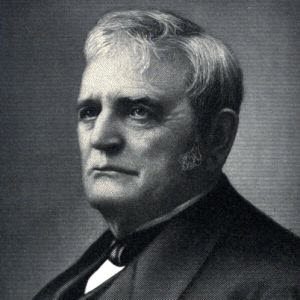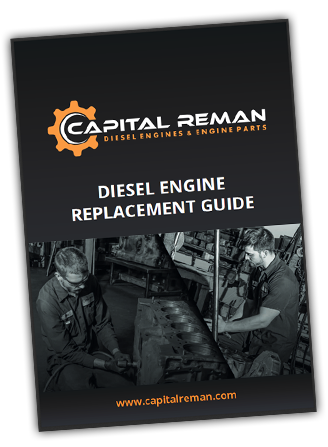107 Odd Facts About John Deere
John Deere History and Company Facts
 1. John Deere was born into a middle class family in Rutland, Vermont on February 7, 1804.
1. John Deere was born into a middle class family in Rutland, Vermont on February 7, 1804.
2. John Deere was the third son of William Rinhold Deere and Sarah Yates Deere. William and Sarah had 6 children including John.
3. William Deere’s profession was a professional merchant tailor.
4. In 1808 William Deere boarded a ship bound for England to claim an old family inheritance. He was never heard from again and it was assumed he died at sea.
5. John Deere was raised by his mother and the family of 7 barely survived on her limited income.
6. John took a job in his teens as a tanner where he ground bark to help the family.
7. John Deere had a limited education and taught himself the Blacksmith Trade by accepting an apprenticeship at age 17 with Captain Benjamin Lawrence of Middlebury, Vermont.
8. After just 4 years of a blacksmith apprenticeship Deere set out on his own to charter his own course. For the next 12 years Deere moved around Vermont practicing his trade in various towns. He had limited success as competition was steep for blacksmiths.
9. John had not one but two blacksmith shops that were destroyed by fire.
 10. A former employer of John’s had settled a small village in Western Illinois called Grand Detour. At the time many easterners were venturing out west in pursuit of economic opportunity.
10. A former employer of John’s had settled a small village in Western Illinois called Grand Detour. At the time many easterners were venturing out west in pursuit of economic opportunity.
11. In late 1836, at the age of 33, John Deere left Vermont for Grand Detour, Illinois facing bankruptcy and a fledgling economy which would later become the Panic of 1837.
12. John made the trip with just $73 dollars in his pocket. He faced debtors prison in Vermont and was summons by the Village of Leicester for a note he owed of $78.76.
13. The trip took John Deere 3 weeks by canal boat, steamer and wagon to arrive in Grand Detour.
14. He set up another blacksmith shop in Grade Detour, Illinois and after a year of business he sent for his wife Demarius Lamb and their 5 children.
15. In Grand Detour, Deere was regarded as the village repairman in addition to his blacksmith duties. He was also responsible for repairing and making small tools such as shovels, pitchforks and plows.
16. In 1837 John Deere was foraging a steel blade for a local sawmill when the blade cracked in half and stuck in the dirt. Deere went to pick up the steel blade stuck in the dirt when he was struck with a life changing idea.
 17. The blade was bent in a concave U shape and John Deere immediately thought of how this shape could be used utilized in plow designs of the time.
17. The blade was bent in a concave U shape and John Deere immediately thought of how this shape could be used utilized in plow designs of the time.
18. Plows of the time were made of wood or cast iron and had to be scrapped clean of dirt on a regularly basis as the fertile soil of Illinois would stick to the blade surface.
19. John Deere started tinkering with steel plow designs and by 1838 had sold 3 plows to local farmers.
20. Deere saw that value of manufacturing equipment for stock and having them ready for sale versus manufacturing a plow after and order had already been placed. By 1839 John Deere had produced 10 more plows and by 1840 had 40 plows built.
21. In 1842 John Deere partnered with Leonard Andrus and purchased land for construction of a two story factory along the Rock River in Illinois.
22. The original factory in Rock River was named the “L. Andrus Plough Manufacturer”.
23. In 1842 John Deere produced 100 plows and 400 plows by 1843.
24. In 1843 John Deere procured steel shipments from England for his plows. Later on John Deere would purchase steel from Pittsburgh, PA as the steel industry in America exploded post Civil War.
 25. By 1846 production had risen dramatically and John Deere had over 1,000 plows in stock at his facility.
25. By 1846 production had risen dramatically and John Deere had over 1,000 plows in stock at his facility.
26. In 1848 John Deere ended his partnership with Leonard Andrus and relocated the company to Moline, Illinois to have better access to the railroad and Mississippi River.
27. Also in 1848, John Deere formed a partnership with Robert Tate and John Gould and built a 1,440 sq. ft factory.
28. By 1849 production rose to 200 plows a month and an additional 2 story addition was added to the factory.
29. In 1853 John Deere bought out Tate and Gould and joined his son Charles Deere in business.
30. Early on John Deere produced a number of various types of equipment including planters, cultivators, plows and wagons.
31. John Deere was a pioneer of a product quality once saying, “I will never put my name on a product that does not have in it the best that is in me.”
 32. John Deere was a sticker on about design changes and to never stop improving the quality of his products. One of his early business associates would say changes in design were not necessary as farmers would be forced to take whatever was produced. Deere responded with, “They haven’t got to take what we make and somebody else will beat us, and we will lose our trade.”
32. John Deere was a sticker on about design changes and to never stop improving the quality of his products. One of his early business associates would say changes in design were not necessary as farmers would be forced to take whatever was produced. Deere responded with, “They haven’t got to take what we make and somebody else will beat us, and we will lose our trade.”
33. In 1857 the company was producing 1,120 units a month however in 1858 a financial recession gripped the nation and Deere sold his financial interests to his son in law Christopher Webber and son Charles to avoid bankruptcy.
34. John Deere made sure his son Charles got the best education having not had much of an education himself. Charles Deere attended private schools in Moline, went to Iowa College in Davenport, Iowa and then further studies at Knox College in Galesburg, Illinois. He completed, which was the equivalent of an MBA, at the prestigious Bell College in Chicago, Illinois.
35. Charles Deere joined the company at age 16 as the company’s bookkeeper.
36. 21 year old Charles Deere took over the company in 1858 and ran it for 49 years.
37. John Deere became interested in politics in the early 1850s and agreed to be county chairman for the Whig party.
38. John Deere was a staunch abolitionist and was highly involved in the newly formed Republican Party.
39. The company incorporated as Deere & Company in 1868 and was a supporter for Union Army during the civil war.
40. After the civil war John Deere spent his golden years on a farm raising Jersey Cattle and Berkshire Hogs.
41. In 1865 John’s wife of 38 years, Demarius, died. In 1866 John traveled to Vermont to marry Demarius’ younger sister, Lucenia.
 42. John Deere was very active in local politics in Moline and was elected the second Mayor of Moline in 1873.
42. John Deere was very active in local politics in Moline and was elected the second Mayor of Moline in 1873.
43. Under John’s tenure as Mayor he brought the first fire engine, co-founded The First National Bank and was a trustee of the First Congregational Church. He also contributed to numerous charitable, educational and political organizations in Illinois.
44. John was elected to Mayor during a widespread temperance movement in America and passed an unpopular liquor license ordinance receiving widespread criticism.
45. Mayor John Deere was best known for during his tenure for fixing sidewalks and sewers as well as attending to public health measures to prevent disease.
46. After John’s two year tenure as mayor of Moline was up he was more than ready to leave politics behind him. He and his wife Lucenia frequently traveled to Vermont as well as California via the newly completed transcontinental railroad to escape those cold Midwest winters.
47. John Deere served as President of his company until 1886 while Charles ran the day to day operations.
48. John and his second wife, Lucenia, had 4 more children in John’s golden years. John Deere fathered 9 children in total between his first and second wives.
 49. John Deere passed away May 17, 1886 at the age of 82 at his home in Red Cliff which overlooked the town of Moline which now had 10,000 residents.
49. John Deere passed away May 17, 1886 at the age of 82 at his home in Red Cliff which overlooked the town of Moline which now had 10,000 residents.
50. More than 4,000 people attended John Deere’s funeral to pay their final respects.
51. John Deere’s family went on to lead the company for another 96 years after his death.
52. Charles Deere was an outstanding businessman and expanded the business with his concept of independent wholesaler networks called “Branch Houses” which were helped to market and supply independently owned and operated retail outlets.
53. Beginning in 1888 steam tractors began making an appearance on American farms. John Deere produced gang plows that steam tractors could pull but not the tractors themselves. The steam age would last roughly 30 years eventually being replaced by the gas or diesel powered tractors. John Deere largely didn’t compete in the steam tractor market.
 54. In the mid 1890s the bicycle became a popular mode of transportation in America. John Deere tried to capitalize on the trend and produced three models of bicycles in 1894: The Deere Roadster, The Deere Leader and the Moline Special. Production stopped after a couple of years once the craze died down.
54. In the mid 1890s the bicycle became a popular mode of transportation in America. John Deere tried to capitalize on the trend and produced three models of bicycles in 1894: The Deere Roadster, The Deere Leader and the Moline Special. Production stopped after a couple of years once the craze died down.
55. Charles Deere passed away in 1907. By that time the company was producing a wide variety of product lines including cultivators, corn and cotton planters, plows, wagons, bailers and flatbeds.
56. In 1907 John Deere’s third President, William Butterworth, instituted the first company pension plan for all employees with more than 20 years of service and who have passed the age of 65.
57. In 1911 John Deere’s third President William Butterworth brought six non-competing farm equipment companies under the John Deere banner which greatly expanded John Deere’s ability to produce a full line of products.
58. In 1918 the company purchased the Waterloo Gasoline Traction Engine Company in Waterloo, Iowa. Tractors would become a staple of the John Deere line.
 59. The first year of production of the Waterloo Tractor produced 5,634 units.
59. The first year of production of the Waterloo Tractor produced 5,634 units.
60. In 1923 John Deere produces the Model D tractor which would become the bestselling two-stroke cylinder engine. It would remain in production for another 30 years.
61. In 1928 Charles Deere Wiman took over the company and set in motion the groundwork that would become the modern day John Deere. Modern agriculture in American was developing and it was due to his strong importance on technology and engineering that made the John Deere Company really take off.
62. Sales plummet to $8.7 million a year by 1933 as the Great Depression sets in. The company is losing money at an alarming rate forcing massive layoffs, pay and pension cuts, part time hours and end to vacation days.
63. During the Great Depression John Deere tries to help its employees as best it can by continuing its group insurance for the unemployed, lowers rents to affordable levels in company housing communities, starts a group savings plan and creates “make work” program which is the company equivalent of national New Deal Program.
 64. Despite the economic hardships during the Great Depression the company did $100 million in Gross Sales in 1937 and climbed its way out of its financial troubles.
64. Despite the economic hardships during the Great Depression the company did $100 million in Gross Sales in 1937 and climbed its way out of its financial troubles.
65. In 1938 Henry Dreyfuss worked with John Deere engineers to streamline the Model A and B Tractors to make them more attractive and user friendly. For the first time agriculture equipment focused more on the design, user comfort in addition to functionality. The new designs were a huge success for John Deere.
66. In 1942 Charles Wilman Deere took an Army Commission as a Colonel during WWII before returning to the company in 1944. Wilman is put in charge of the Farm Equipment and Machinery Division by the War Production Board.
67. During WWII John Deere produces ammunition, military tractors, aircraft parts, cargo and mobile laundry units.
68. In 1945 John Deere workers become unionized as collective bargaining gains movement in America. This practice replaces the 105 year practice of dealing with workers individually.
 69. Following WWII John Deere Wiman and President Burton Peek continued to place an emphasis on engineering and product development which catapulted the company to the Top 100 businesses in America in 1955.
69. Following WWII John Deere Wiman and President Burton Peek continued to place an emphasis on engineering and product development which catapulted the company to the Top 100 businesses in America in 1955.
70. John Deere started producing diesel engines in 1949.
71. The first John Deere engine produced 51 HP, featured the first power take-off (PTO) with its own clutch and was installed in the Model R tractor.
72. The Model R tractor actually featured two engines. The first engine was a 416 cubic inch diesel engine along with a two stroke gasoline engine. The reason for the dual engines is due to difficulties starting early diesel engines. With the dual design the driver of the tractor could start the engine with a pull of a starting lever instead of manually turning the flywheel. The gas powered engine could also warm up the diesel engine in cold weather climates.
73. The Model R Tractor changed the face of agriculture forever. It was first introduced in 1949 and was in development for over 10 years prior to being introduced to the public.
 74. The Model R Tractor originally sold for $3,700 retail.
74. The Model R Tractor originally sold for $3,700 retail.
75. The Model R Tractor was known as a workhorse on large farms as it has the ability to haul up to 6,644 lbs. and could reach a maximum speed of 11.5 mph.
76. The Model R Tractor today can fetch $7,000-$8,000 at auction.
77. In 1953 John Deere launched the Model 70 which was the first John Deere diesel powered crop specific tractor.
78. The first 4 and 6 cylinder diesel engines premiered in the Model 8010 Tractor in 1959. The Model 8010 marked the end of 2 cylinder “two stroke” engine technology for John Deere.
79. The next major line of 4 and 6 cylinder diesel engines were introduced in 1960 in the Model 1010, 2010, 3010 and 4010 tractors. These 4 and 6 cylinder engines ran on gasoline, propane and diesel fuels to fit the various needs of its diverse customer base.
 80. The first turbocharged diesel engine was introduced in 1969.
80. The first turbocharged diesel engine was introduced in 1969.
81. The period between 1955-1982 under President William A. Hewitt was one of the most fruitful periods in company history. Operations expanded worldwide and John Deere became the largest manufacturer of agriculture equipment in the world.
82. In 1956 John Deere expanded for the first time outside of the United States when the company purchased a small tractor assembly plant in Mexico.
83. The 1980s was a difficult period for John Deere as the malaise of the country had set in deep. Under President Robert A. Hanson the company learned how to be more flexible and adaptive while facing steep competition from other manufacturers.
84. The last 3 years of the 1980s were extremely profitable once again and the company set gross sales records.
 85. The 1990s under President Hans W. Becherer would explode with growth as he, like Hanson, would focus on international expansion. Under his leadership the company would earn record profits. Following in John Deere’s footsteps Becherer would turn his attention back toward philanthropy: putting much needed time and attention back into the re-development of Downtown Moline as well as establishing PGA Events including the TPC at Deere Run and the John Deere Classic PGA Tour Event.
85. The 1990s under President Hans W. Becherer would explode with growth as he, like Hanson, would focus on international expansion. Under his leadership the company would earn record profits. Following in John Deere’s footsteps Becherer would turn his attention back toward philanthropy: putting much needed time and attention back into the re-development of Downtown Moline as well as establishing PGA Events including the TPC at Deere Run and the John Deere Classic PGA Tour Event.
86. In 2000 Mr. Becherer retired and Robert W. Lane took the reins of John Deere. He continues to improve product development and focus on international efforts.
87. The most famous and popular line of John Deere diesel engines is the PowerTech Series first introduced in 1996. The PowerTech Series was first created in response to the EPA Tier Regulations first implemented in 1994. The PowerTech engines were firstly Tier I Compliant.
88. The PowerTech Platform is John Deere’s engineering plan for making emission compliant engines and meeting or exceeding all new EPA Tier Standards.
 89. John Deere was the first major manufacturer to comply with Tier IV Compliance with its smaller 75-174 HP engines.
89. John Deere was the first major manufacturer to comply with Tier IV Compliance with its smaller 75-174 HP engines.
90. John Deere has manufactured over 5,000,000 engines in its history. More than 60% are still in operation.
91. The horsepower range for John Deere engines ranges from 50-600 HP.
92. There are more than 4,500 John Deere dealership locations worldwide.
93. In 1963 John Deere entered the consumer market by first starting to manufacture lawn and garden tractors. As of 2016, John Deere is the largest manufacture of lawn and garden machinery.
94. John Deere has been producing marine engines for more than 35 years ranging from 80-750 HP.
 95. In the early 1970s John Deere ramped up production of lawn and garden equipment which sold like hotcakes. In 1991 John Deere created the “Lawn-and-grounds-care equipment division” separating this type of equipment from the “Farm Operations Division”.
95. In the early 1970s John Deere ramped up production of lawn and garden equipment which sold like hotcakes. In 1991 John Deere created the “Lawn-and-grounds-care equipment division” separating this type of equipment from the “Farm Operations Division”.
96. The John Deere 300 Series was the first ever diesel powered lawn mower which was introduced in 1986. By 1993 lawn and garden equipment sales topped $1 billion in sales for the company.
97. Some of the largest diesel engines John Deere produces currently are in the 9R/9RT/9RX Series of Tractors averaging roughly 570 HP.
 98. John Deere engines are manufactured for a variety of applications including: agriculture, marine, forestry, off-highway applications, generators, construction, mining, irrigation pumps and natural gas on-highway over the road applications.
98. John Deere engines are manufactured for a variety of applications including: agriculture, marine, forestry, off-highway applications, generators, construction, mining, irrigation pumps and natural gas on-highway over the road applications.
99. John Deere engines are manufactured in 5 different plants worldwide: Waterloo (USA), Torreon (Mexico), Saran (France), Rosario (Argentina) and Pune (India).
100. Over the course of the company history there have been 596 different tractor models.
101. The first industrial tractor rolled out of the Dubuque, Iowa plant in 1958 with the signature yellow paint. All industrial John Deere equipment is painted yellow. All agriculture equipment is painted green.
102. Over the course of the company history there have been 8 different versions of the company logo which feature a leaping deer.
 103. The popular slogan “Nothing runs like a Deere” was first introduced in the early 1970s to promote their now defunct line of snowmobiles. The slogan stuck and is still in use today however John Deere got out of the snowmobile business in 1984 selling its supply to Polaris.
103. The popular slogan “Nothing runs like a Deere” was first introduced in the early 1970s to promote their now defunct line of snowmobiles. The slogan stuck and is still in use today however John Deere got out of the snowmobile business in 1984 selling its supply to Polaris.
104. 1998 was a banner year for John Deere as it hit $1 billion in gross revenue. This was the first time in history that an agriculture equipment company hit that mark. To preface in 1997 $3 billion in sales were accounted by growth in China.
105. In 2007 John Deere is named one of World’s Most Ethical Companies by Ethisphere Magazine.
106. Also in 2007 shareholders approved the two for one split of the company stock increasing the common stock shares to 1,200 million total shares.
 107. As of 2016 there have been over 68,000 people worldwide employed by John Deere and introduced new updates to 11 of its lines.
107. As of 2016 there have been over 68,000 people worldwide employed by John Deere and introduced new updates to 11 of its lines.
John Deere’s line of products includes basic tractors, tracked tractors, FEL attachments, combines, forged harvesters, cotton pickers, hay and forage bailers, sugar harvesters, tillers, cutter and shredders, scrapers, self-propelled sprayers, gator utility vehicles, planters and seeders, spreaders and aerators, riding mowers, dump trucks, backhoe loaders, compact track loaders, crawler dozers, crawler loaders, excavators, motor graders, scraper systems, skid steers, tractor loaders, waste equipment, wheel loaders, commercial equipment and a full line of John Deere Diesel Engines. The company will continue to grow and be a pioneer in agriculture equipment for years to come.




